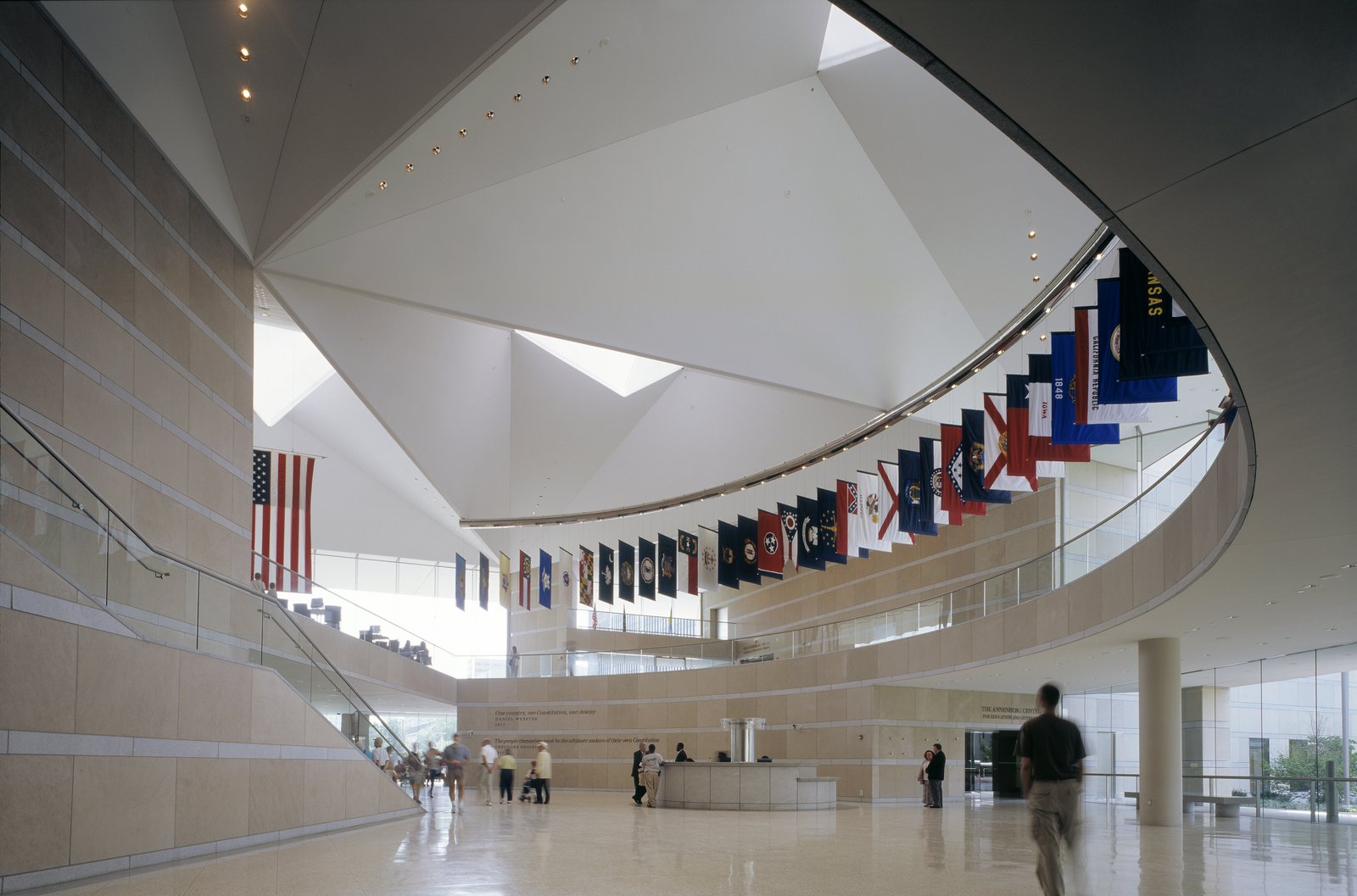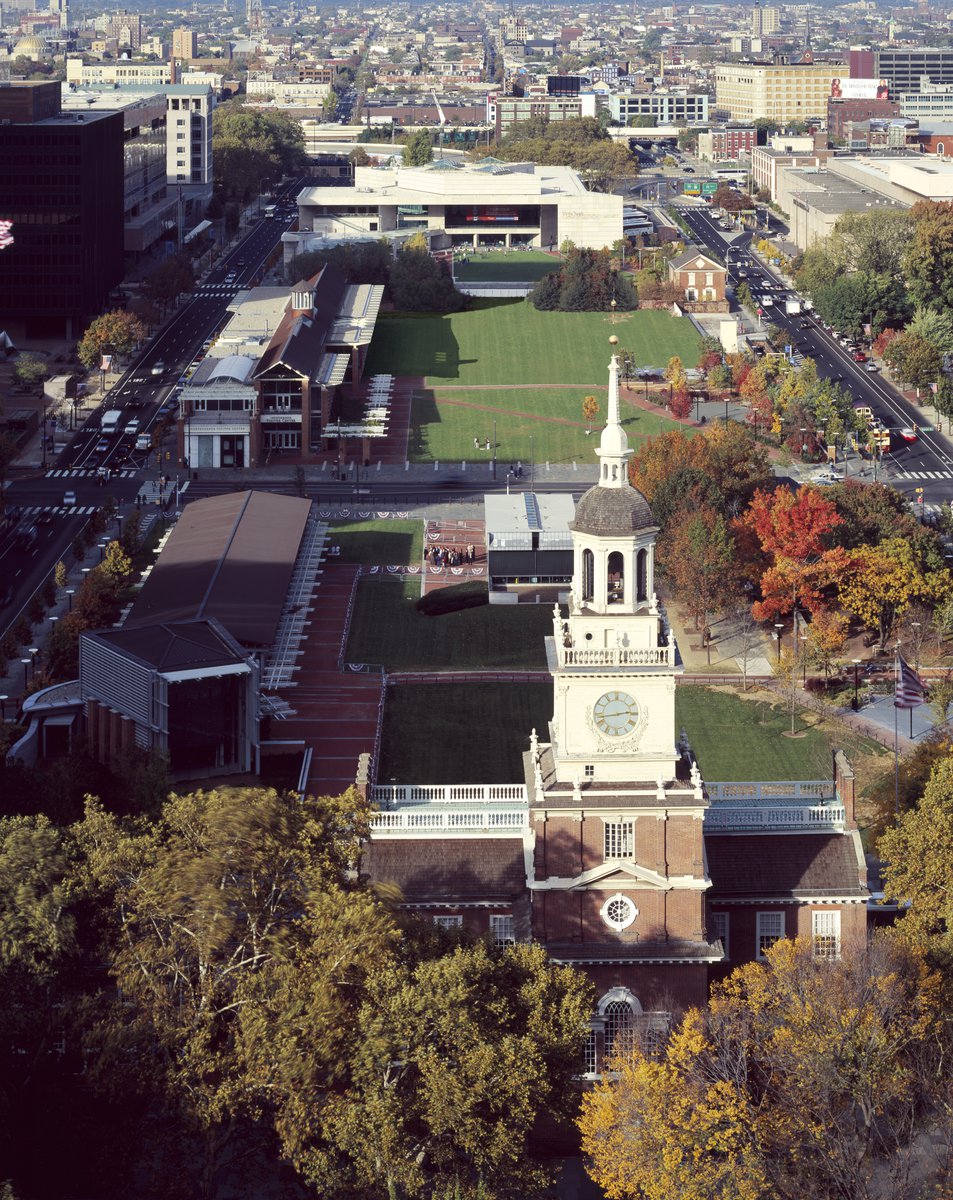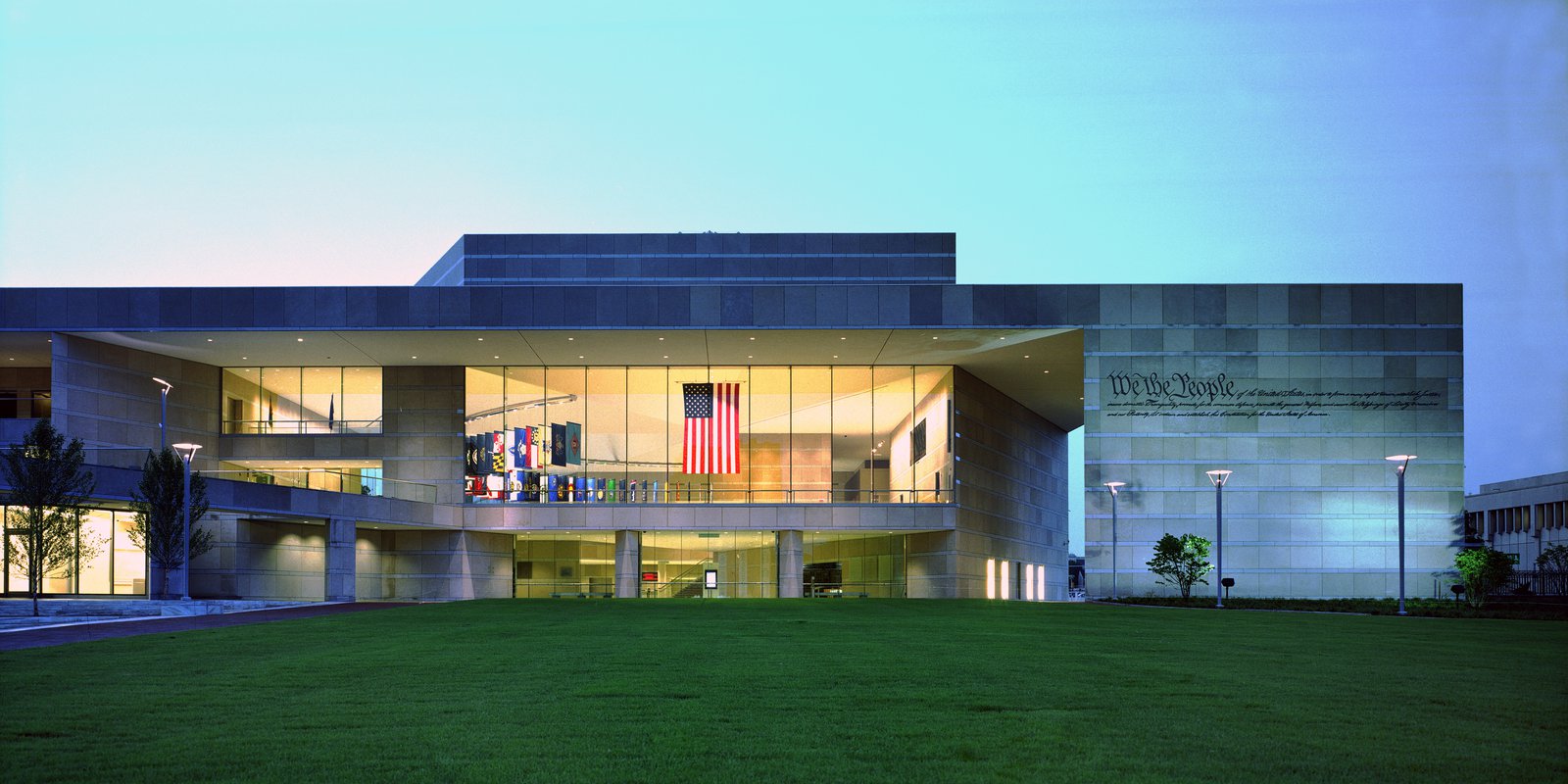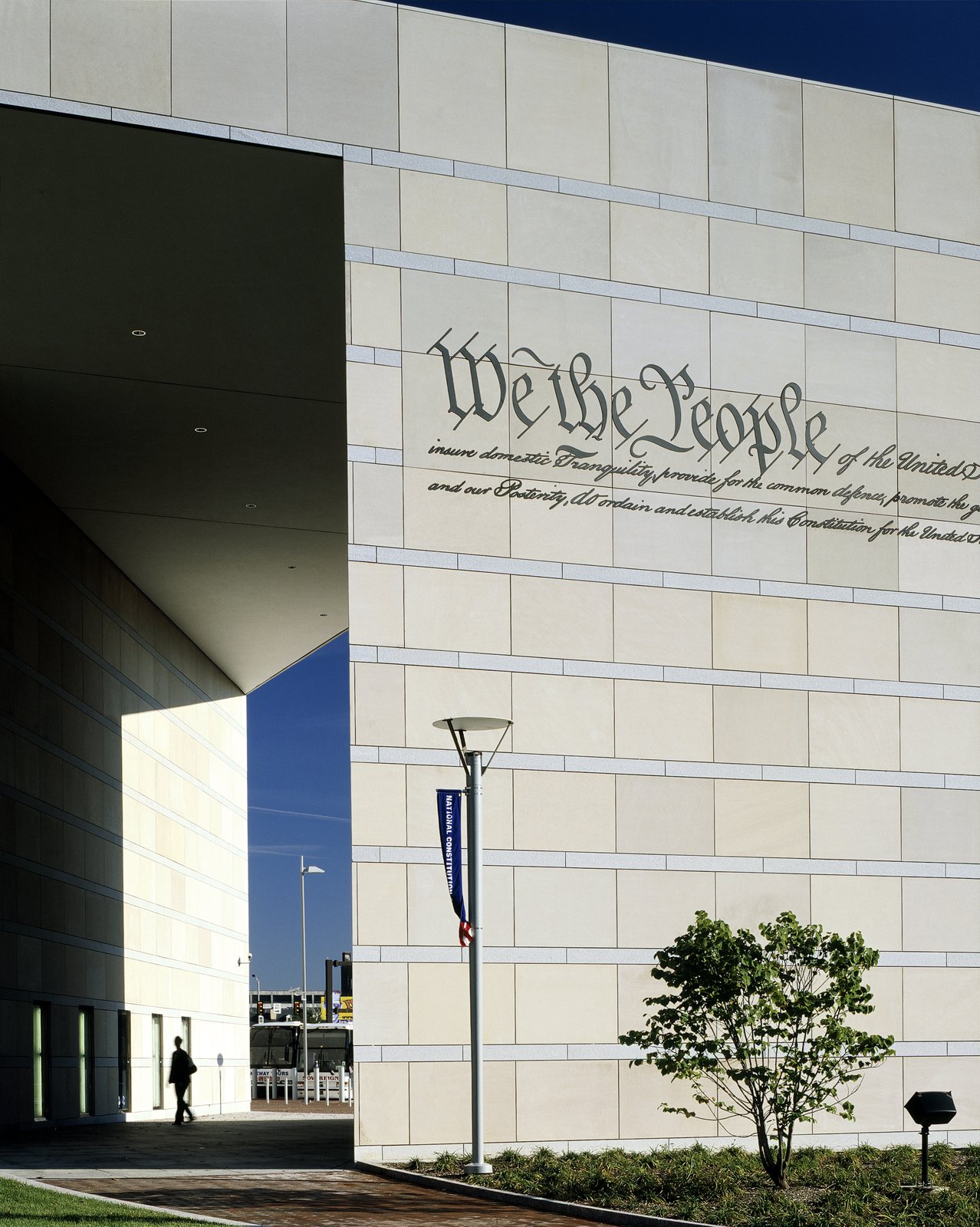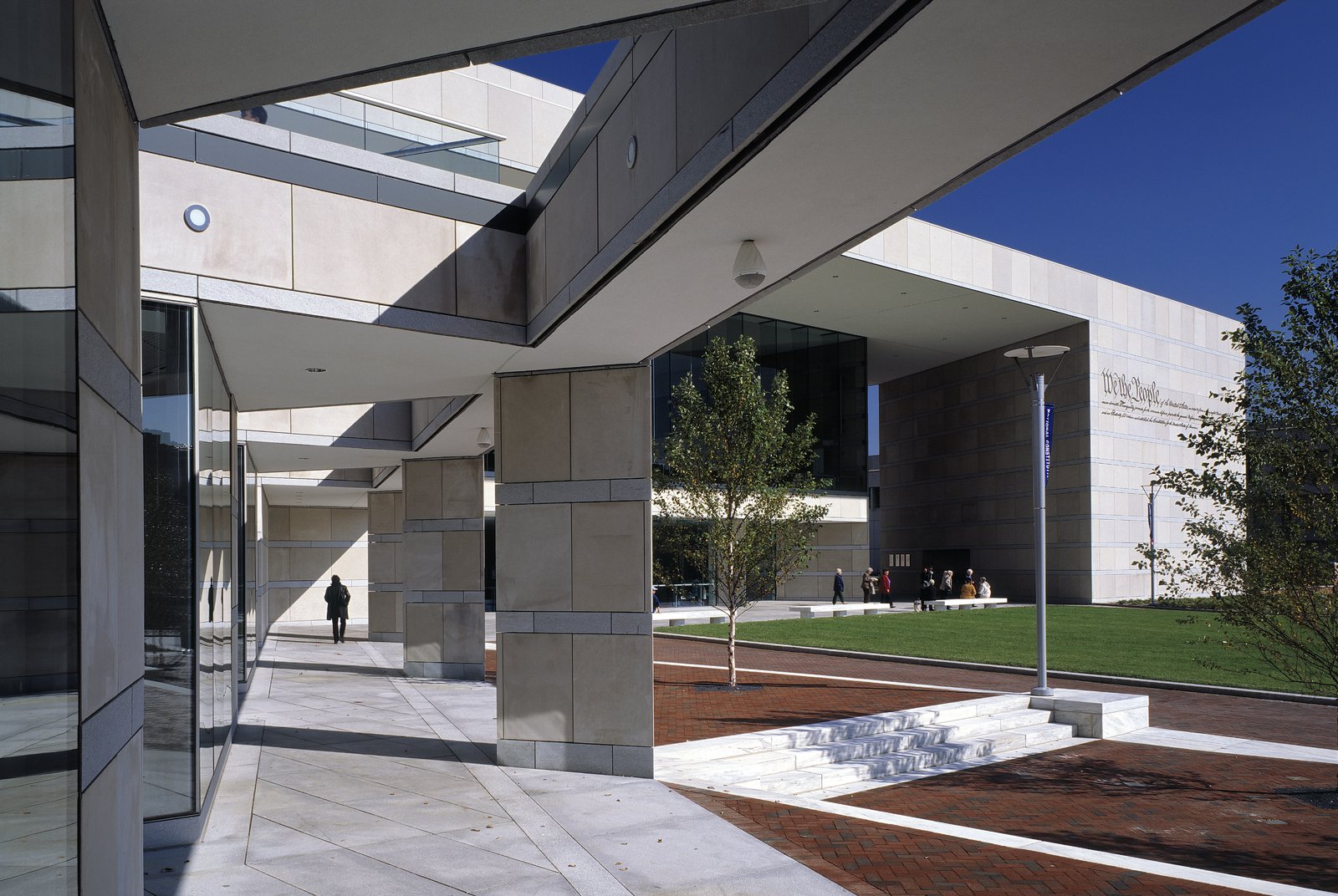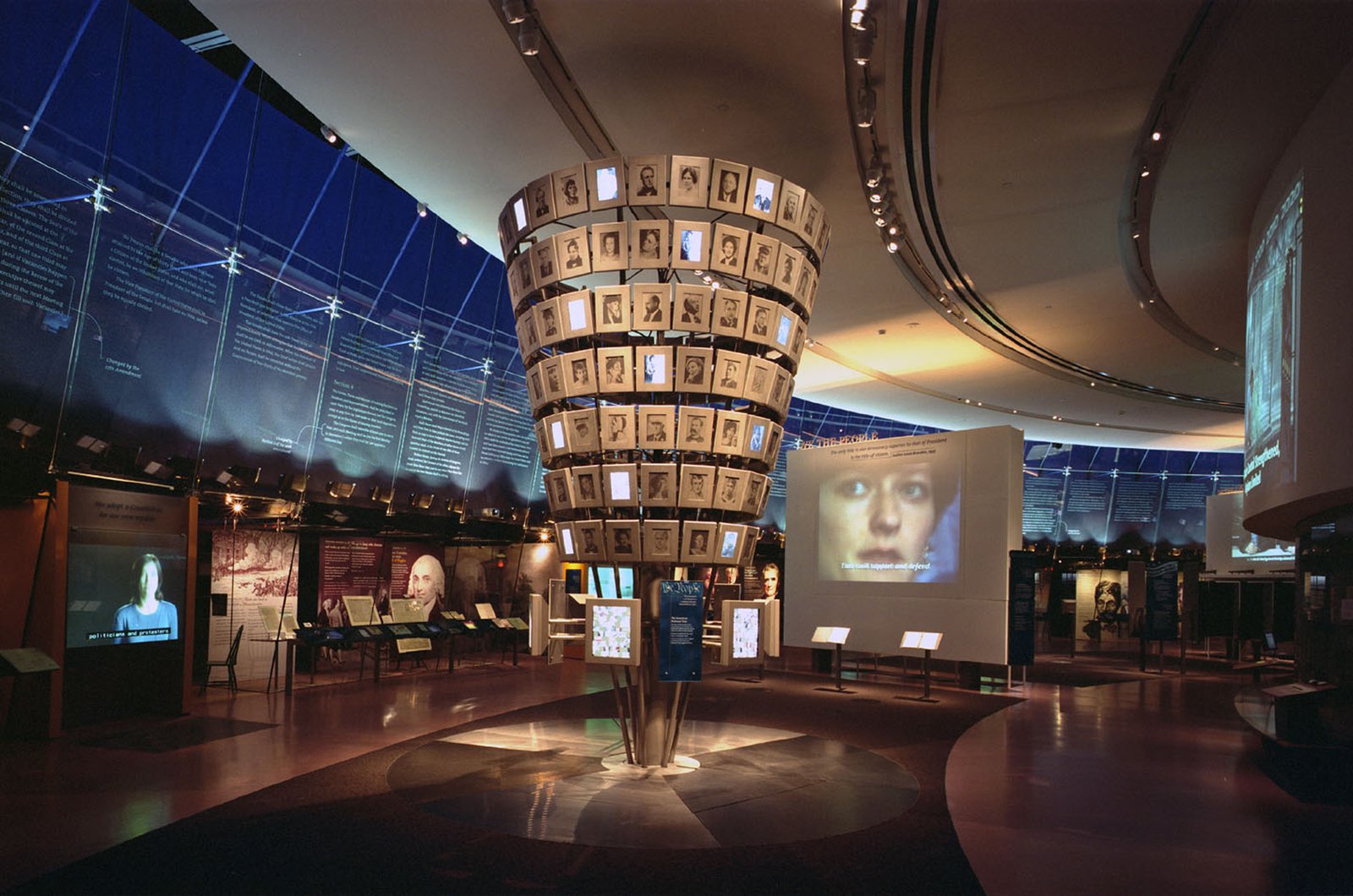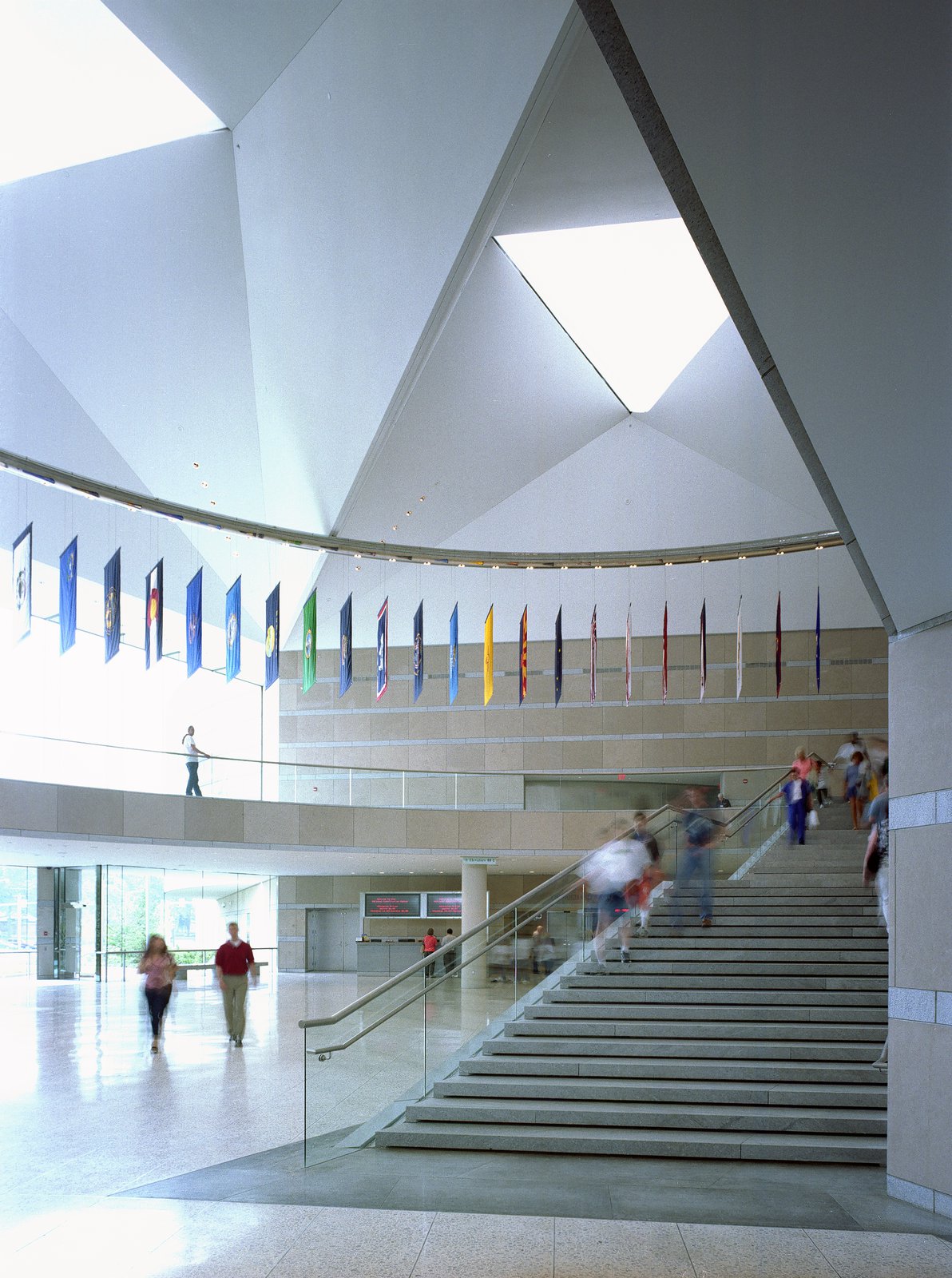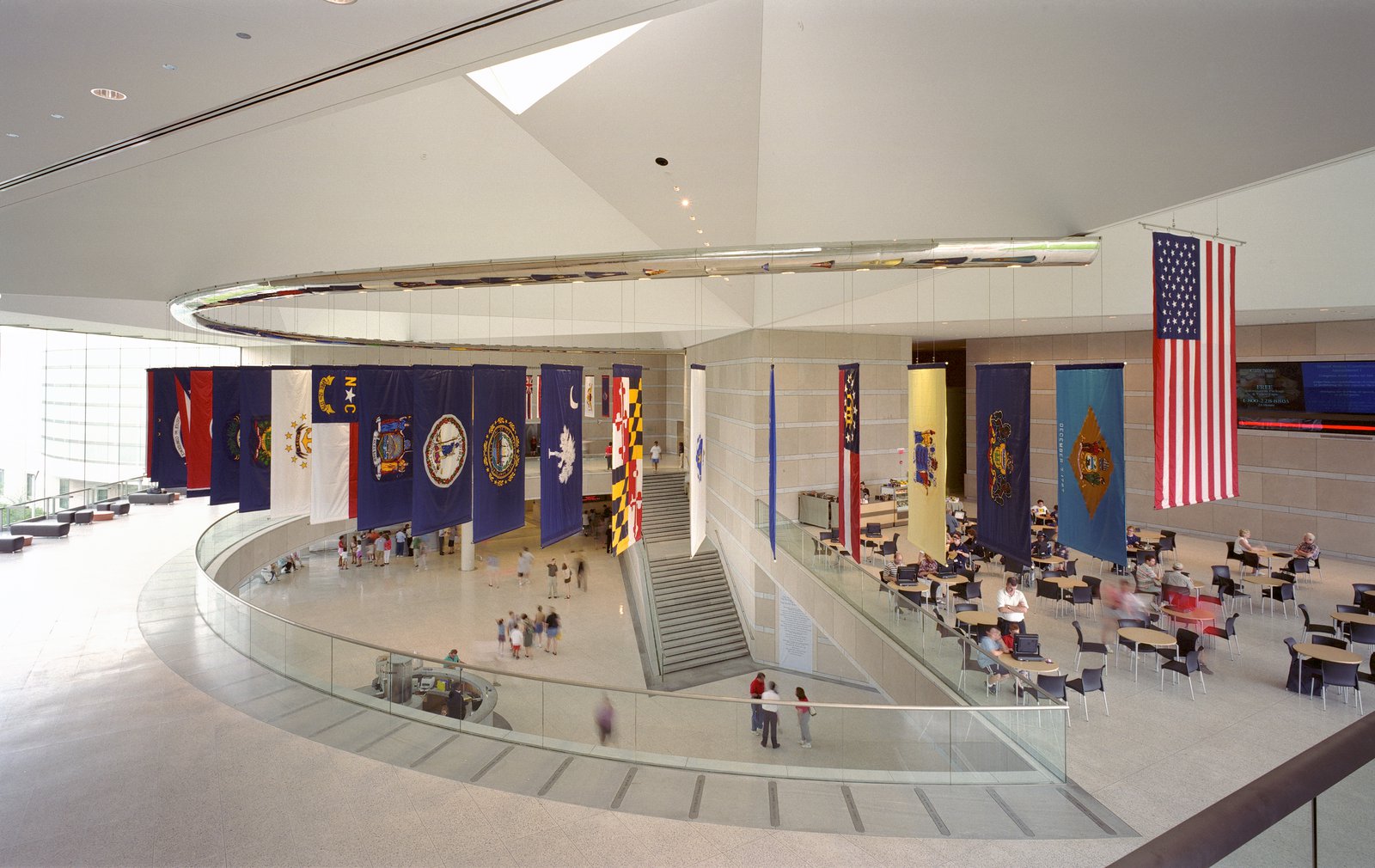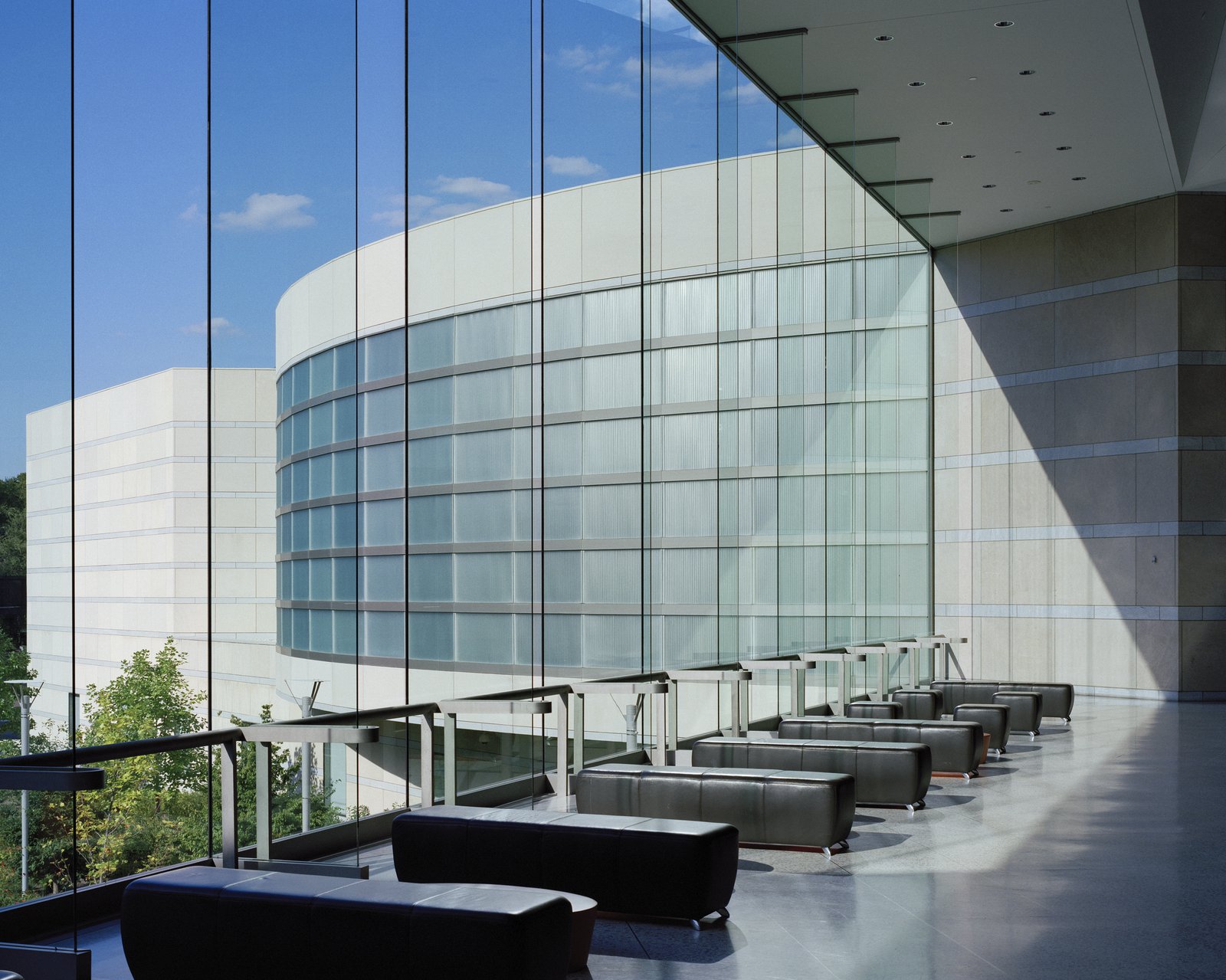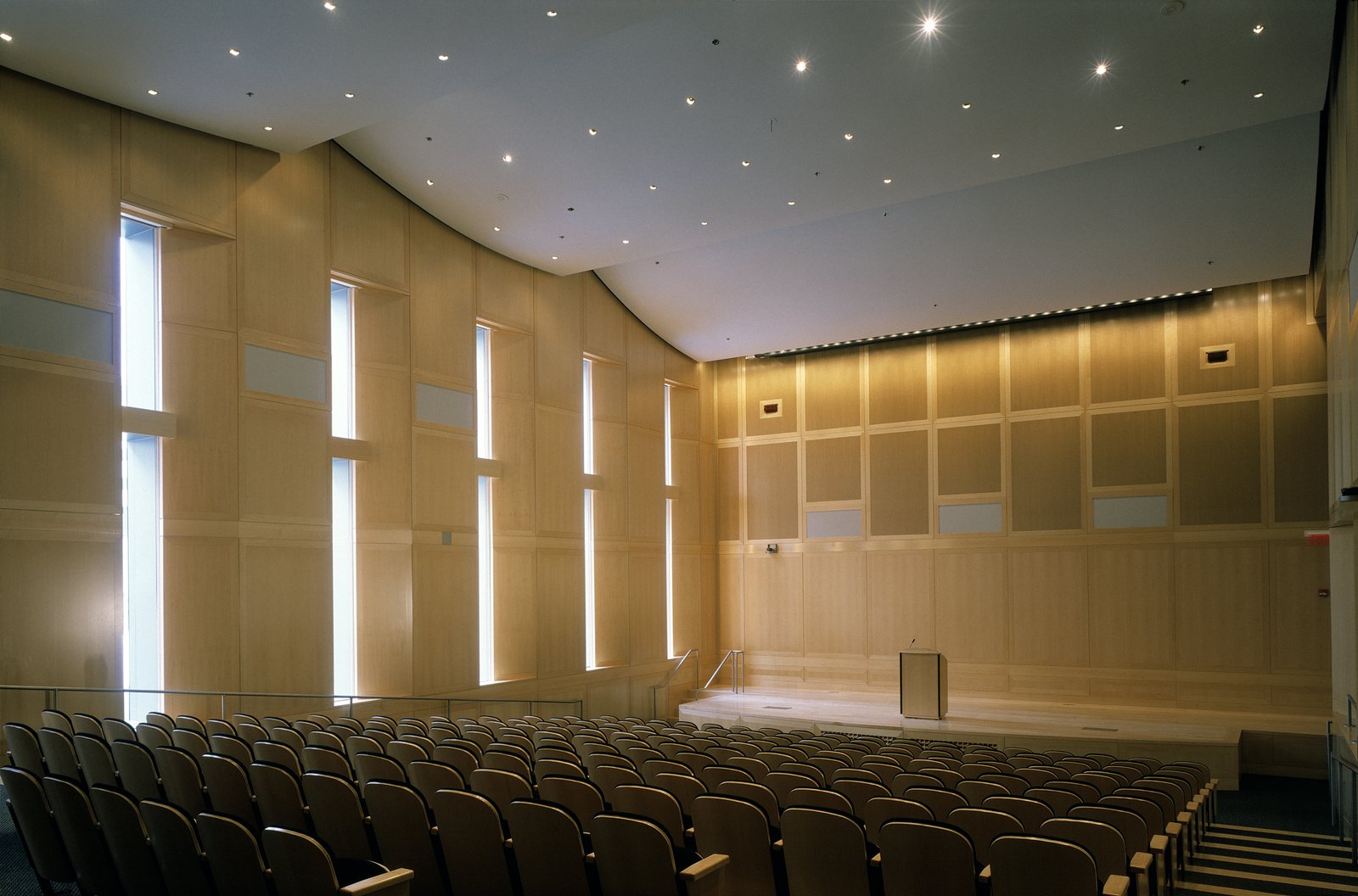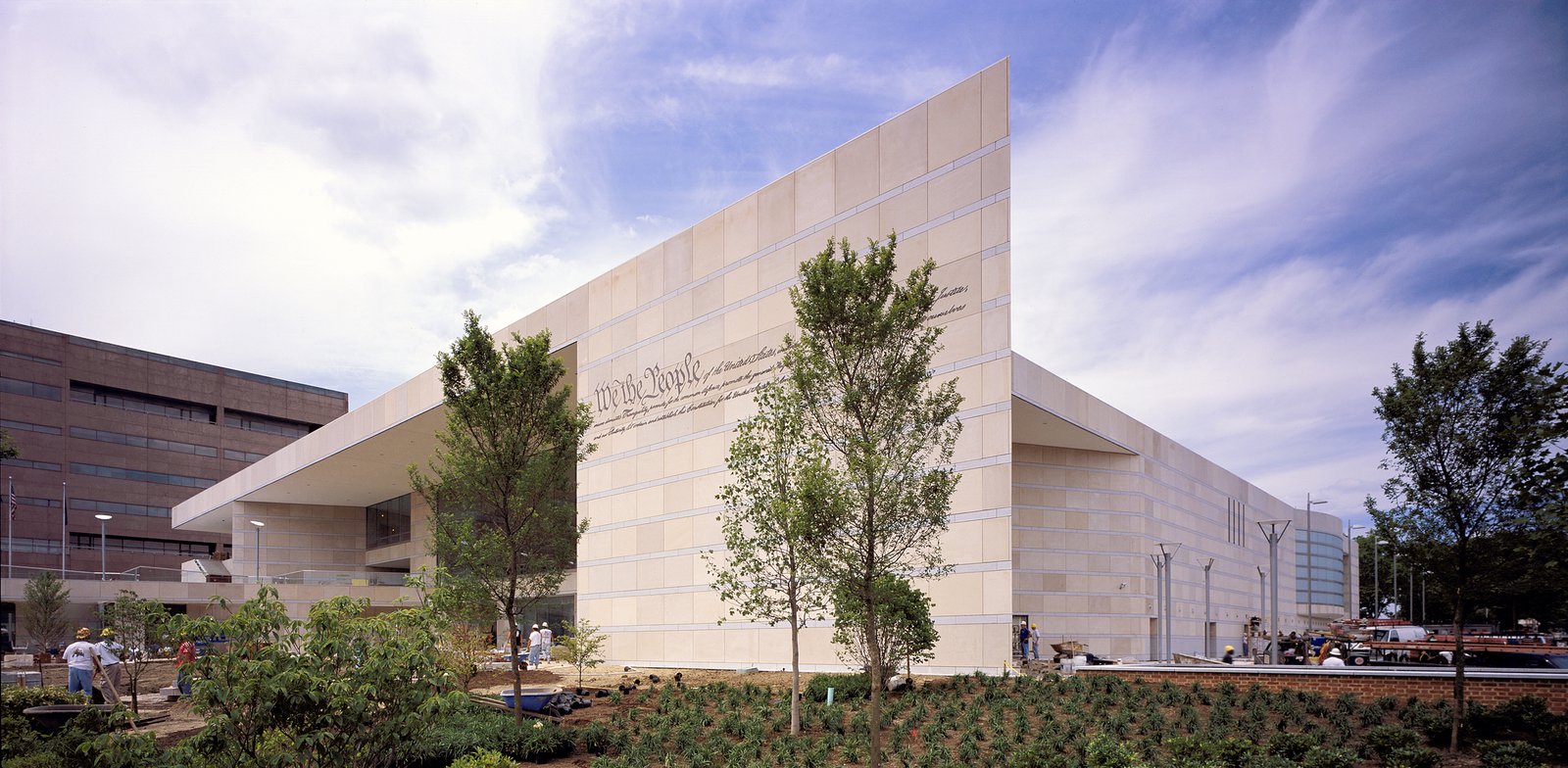National Constitution Center
The National Constitution Center is the first structure devoted to the blueprint of American democracy. The goal of the design is not to enshrine the historic document but to explain and celebrate its ongoing relevance.
The museum stands at the northern end of Independence Mall, opposite Independence Hall, where the Constitution was debated and signed in 1787. A monumental open porch invites entry and engages visitors with views into the museum and out to the city. This transparency reflects the responsiveness and openness essential for freedom and self-government. Similarly, the building's diagonal geometry speaks dynamically of the Constitution's capacity to shape, and be shaped by, the society it governs.
Show Facts
Site
At the north end of Independence Mall
Components
280,000 ft2 / 26,000 m2 gross area; permanent and temporary exhibition spaces, theater, auditorium, Educational Outreach Center, restaurant, school lunch area, museum shop, Founders Room, administrative offices, underground parking
Client
National Constitution Center
PCF&P Services
Architecture; exterior envelope; interior design
lead designers
A visit to the museum begins in the introductory theater in-the-round, conceived also to serve as a national town hall for televised presidential debates and other significant events. Visitors then encounter a series of interactive exhibitions designed to present the complexities of the Constitution to people of all ages and backgrounds.
Visitors ultimately emerge into a skylit ceremonial hall with the American flag suspended at its center and the flags of the fifty states arrayed nearby. Here, looking back across the Mall, the National Constitution Center visually engages with Independence Hall, continuing and celebrating the story begun more than two centuries ago.
Project Credits
Associate Architect: Kise Straw & Kolodner, Architects, Planners, Historians, Philadelphia; Structural: Leslie E. Roberston Associates, New York; Mechanical: Brinjac Engineering, Inc., Philadelphia; Exhibit Design: Ralph Appelbaum Associates, Inc., New York; Landscape: Olin Partnership, Philadelphia; Images: Alan Karchmer, Pei Cobb Freed & Partners

